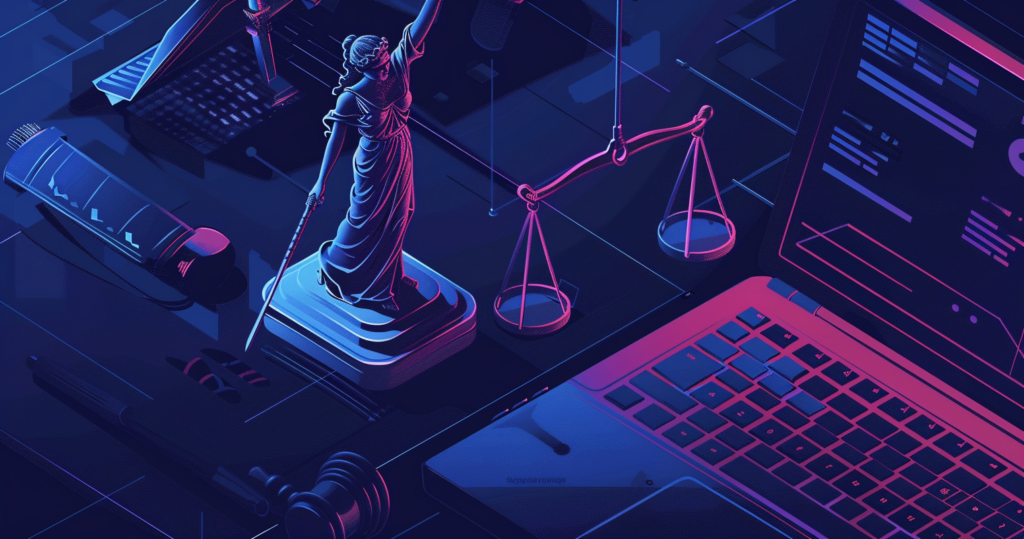In this article, we would like to introduce you to the Accessibility Reinforcement Act (Barrierefreiheitsstärkungsgesetz), which comes into force on June 28, 2025, and how you can implement an accessible website. The digital age has revolutionized our everyday lives and fundamentally changed the way we communicate, work and share information. But while this technological evolution has brought countless benefits for many of us, one important group is often excluded: People with disabilities. The Accessibility Act for websites, an important legal instrument, aims to close this gap and ensure that the internet is accessible to all.
In a world where digital content is playing an increasingly important role, the Accessibility of websites is not only an ethical obligation, but also a legal one. Requirement. The Accessibility Act requires public institutions and companies to design their digital offerings in such a way that they can be used by people with a wide range of disabilities. This includes a variety of measures, such as adapting font sizes, providing alternative text for images and ensuring navigability with keyboards.
There are numerous benefits to complying with this law. Companies and organizations that make their websites accessible not only open themselves up to a wider audience, but also improve their User friendliness overall. In addition, meeting these requirements can strengthen a company's image and position it as a socially responsible and inclusive company.
We support you in making your website accessible. Please feel free to contact us.
Table of contents
- What does an accessible website mean?
- Guidelines and implementation of the law
- Consequences of non-compliance
- Exceptions to the law
- Advantages for users and companies
- Useful tools for implementing accessibility
- Checklist for ensuring the accessibility of websites
- Use HTML structure and hierarchy correctly
- Conclusion
What does an accessible website mean?
An accessible website is a digital platform that has been designed and developed in such a way that it can be used by all people. independent can be used regardless of their individual abilities or limitations. Web accessibility means that people with disabilities - be it visual impairments, hearing impairments, motor impairments or cognitive impairments - have access to the same information and services as all other users.
In order to achieve this, various technical and design aspects must be Measures be taken. These include the use of sufficiently high-contrast colors to make text and graphic content more visible and adjusting the font size to improve readability. Furthermore, alternative texts should be provided for images so that they can be captured and read aloud by screen readers. Structuring content with headings and paragraphs also contributes to better orientation.
Another important element is navigation. Barrier-free Websites must be designed in such a way that they can be fully operated without a mouse, i.e. only with the keyboard or other input devices. In addition, videos and audio files should be provided with subtitles or transcripts to make them accessible to people who are deaf or hard of hearing.
Guidelines and implementation of the law
The Accessibility Reinforcement Act (BFSG) will enter into force from 28.06.2025 and obliges public bodies and private companies to comply with accessibility requirements in the digital space. The German government emphasizes the importance of this law for an inclusive society and states in its official communication: "With the Accessibility Reinforcement Act we are creating the basis for an Internet that is accessible and usable for everyone. It is an important step towards greater participation and equal opportunities in the digital world."
Consequences of non-compliance
Companies and public institutions that do not meet the requirements of the Barrier-Free Accessibility Reinforcement Act will have to deal with considerable Consequences can expect. In addition to the threat of losing customers and the damage to the company's image caused by the public perception of a lack of accessibility, the law also provides for legal sanctions.
These range from warnings and fines to court orders to make up for the implementation of accessibility measures. In addition, affected persons can sue for their rights, which can lead to additional legal and financial burdens for the organizations concerned. Non-compliance with the law is therefore not only an ethical problem, but also an economic one. Risk represent.
Exceptions to the law
The Accessibility Reinforcement Act also provides for some exceptions. Under certain circumstances, small and medium-sized enterprises can be exempted from the strict requirements if they can prove that the implementation of accessibility measures represents a disproportionate burden for them. An exemption can also be granted if technical or economic reasons make compliance with the accessibility requirements unreasonable.
However, these exemptions must be well justified and documented, and it is expected that the organizations concerned will nevertheless make the best possible efforts to make their digital offerings as accessible as possible. The exemptions are intended to ensure that the law is implemented in a practical manner without placing an excessive burden on small businesses.
Advantages for users and companies
The law offers numerous advantages for both users and companies. For users, especially people with disabilities, it means a considerable increase in participation and accessibility. Equal opportunities. They gain access to information, services and digital content that may not have been available to them before. This promotes their independence and enables them to actively participate in social life.
For companies, compliance with accessibility standards also brings numerous benefits. Firstly, it opens up access to a larger target group, which potentially leads to an expansion of the Customer base and can therefore lead to higher sales. Companies that make their websites accessible also improve user-friendliness for all users, which can increase customer satisfaction and loyalty.
The implementation of accessibility requirements also strengthens a company's image. Companies that are committed to inclusion and accessibility are seen as socially responsible. responsible and modern organizations, which promotes customer trust and loyalty. Last but not least, early adaptation to legal requirements can also help to minimize legal risks and save costs that could arise from any sanctions or necessary subsequent adjustments.
Useful tools for implementing accessibility
Various tools and technologies are available to support companies and developers in implementing the requirements of the Accessibility Improvement Act. These tools help to make websites and digital content accessible and ensure compliance with the legal requirements.
Screen reader
Screen readers are software solutions that convert texts and elements on a website into spoken Language convert. They enable visually impaired and blind users to access digital content. Well-known screen readers are JAWS, NVDA.
Accessibility tools
These tools analyze websites for their accessibility and identify Problems and potential for improvement. Examples are WAVE and Silktide Accessibility Checker. These tools scan websites for known barriers and offer recommendations on how to fix the problems found.
Color analysis tools
Color analysis tools check the color combination on a website to ensure that it is a sufficient Contrast have. This is important for users with visual impairments such as color blindness. Tools like Color Contrast Analyser and Strong help to ensure the legibility and visibility of texts and graphics.
These tools test whether a website is fully compliant with the Navigable keyboard which is particularly important for users with motor impairments. They help developers to ensure that all interactive elements of a website are accessible and operable via the keyboard.
Alternative text tools
Tools like Alt Text Tester check whether images and graphic elements on a website comply with alternatives Texts (Alt-texts) provide are. Alt texts are essential for screen reader users as they provide descriptions of the images.
Subtitle generators
For video and audio content Subtitle and Transcripts necessary to make them accessible to deaf or hard of hearing users. Tools such as Amara and YouTubes' subtitle function help to create subtitles and embed them in videos.
These tools are crucial for the implementation of an accessible website and help companies to meet the requirements of the Accessibility Enhancement Act. By using these tools, companies can ensure that their digital content is accessible to all users, while improving usability and customer engagement.
Checklist for ensuring the accessibility of websites
Check the uniqueness of the elements
All elements on your website should be clearly and unambiguously named so that they can be easily understood and navigated. This applies in particular:
- Navigation points
- Buttons
- Forms and form fields
- Headings and subheadings
- Pictures and videos
Improve complexity and comprehensibility
Make sure information is easy to find and understand. This includes:
- Removal of confusing or superfluous elements
- Clear delimitation of elements and sufficient size of buttons and icons
- Sufficient distance between operable elements, especially on smartphones
- Avoidance of pop-ups, animated JavaScript elements and content that is difficult to control
- Clear structuring of page content and a logical tab order
- Use of simple language and explanations of technical terms
- Structuring texts using subheadings, bulleted lists and tables
- Use plain language
Ensure operability
Your website should be usable in a variety of ways, including with assistive technologies and without a mouse. Check:
- Navigation with keyboard only (Tab, Shift + Tab, Enter, space bar, arrow keys)
- All interactive elements such as navigation, cookie banners, links and forms
- Avoiding dead ends in the navigation
- Use of a screen reader to check the accessibility of all content
- Adding a table of contents for long pages
Check display
Make sure that the content is presented clearly and easily recognizable on all end devices. This includes
- Sufficient contrasts and suitable color combinations (avoid red-green)
- Simple, sans serif and easily legible fonts, at least 14 pixels in size
- Clearly delineated elements without irritating effects such as flashing elements
- Conveying information not only through colors
Use HTML structure and hierarchy correctly
A well-structured HTML 5 markup is important for accessibility:
- Specifying the language in the HTML tag
- Correct labeling of the page areas (e.g. <head>, <title>, , <nav>, <main>, <header>, <footer>)
- Logical use of headings (h1, h2, h3)
- Use of lists (ul, ol) and ARIA labels where necessary
Making images, audio and videos accessible
Make sure that visual and audio content is understandable:
- Provide images with descriptive alt attributes
- Add additional descriptive texts to visual elements
- Provide audio files as transcripts and videos with subtitles
Optimize forms and tools
Forms and tools should be accessible to all users:
- Clear naming of forms and fields including alternative texts
- Short and concise forms with only necessary mandatory fields
- No time limits for input
- Error notes and correction options for input errors
Conclusion
The implementation of the Accessibility Improvement Act for websites is not only a legal obligation, but also an opportunity to make the digital world accessible and usable for everyone. An accessible website ensures that people with disabilities have equal access to information and services, which significantly improves their participation in social life. Companies that meet these requirements benefit from a larger target group, improved user-friendliness and a strengthened image as a socially responsible and inclusive organization.
If you Need support with the implementation of accessibility requirementswe are happy to assist you. With our expertise, we can help you to make your website accessible and thus comply with legal requirements. Together, we will create an inclusive digital environment that is accessible and usable for all users.

